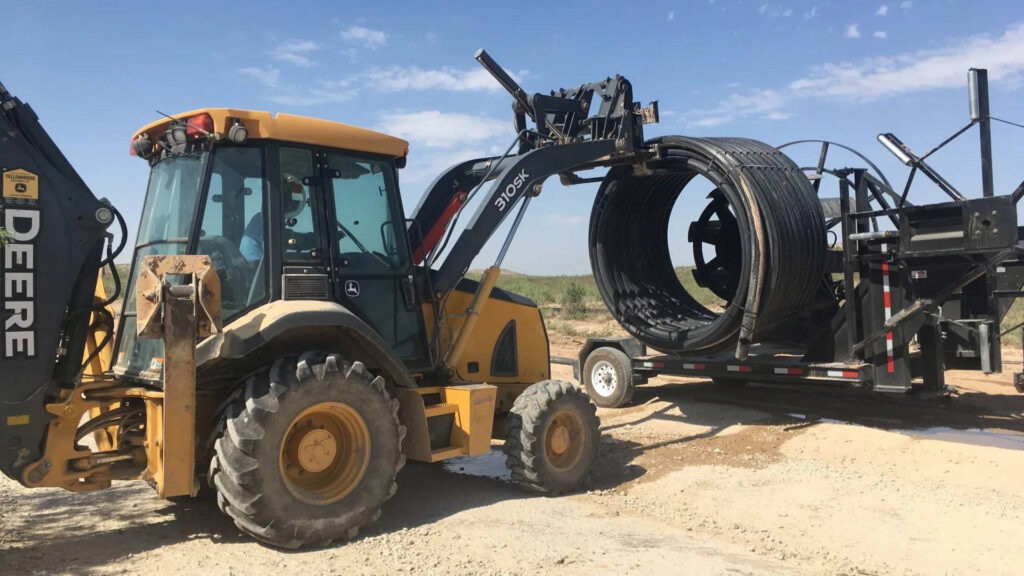Superior Rentals Contact: quick communication guide
A Comprehensive Guide to the Numerous Sorts Of Oil Field Equipment and Pipeline Equipment Available
The oil and gas sector relies greatly on customized equipment for effective removal and transport. Various types of machinery, from piercing rigs to tank, play crucial roles in this intricate procedure. Each item of equipment serves distinctive functions that contribute to overall operational success. Understanding these elements is essential for anybody associated with the industry. As the industry advances, so as well do the modern technologies that support it. What innovations are on the horizon?

Drilling Rigs: The Foundation of Oil Exploration
Drilling rigs serve as the crucial machinery in the domain name of oil expedition, allowing companies to gain access to hydrocarbon books buried deep below the Planet's surface. These rigs can be found in different types, consisting of land rigs, offshore rigs, and mobile systems, each developed to run in specific environments. Geared up with sophisticated innovation, piercing rigs can pass through geological formations with accuracy, ensuring reliable resource removal. The structural stability and functional abilities of these rigs are critical, as they need to hold up against extreme conditions and considerable stress. The choice of a drilling rig impacts the total project cost and timeline, making it an important consideration for oil business seeking to enhance their expedition efforts and take full advantage of productivity in their operations.
Pumps: Necessary for Fluid Motion
In the oil extraction process, the role of pumps is significant, promoting the motion of fluids throughout various phases of manufacturing. Pumps are important for moving crude oil, water, and various other liquids from below ground tanks to the surface area and after that with pipes to refineries. They are available in numerous types, including centrifugal, favorable displacement, and submersible pumps, each offering details objectives based on the fluid qualities and operational demands. Centrifugal pumps are typically utilized for their effectiveness in high-flow applications, while favorable variation pumps master dealing with viscous liquids. The option of pump influences general efficiency, operational safety, and maintenance costs. Correct selection and maintenance of pumps are crucial for maximizing production and lessening downtime in oil area procedures.
Valves: Managing Flow and Pressure

Shutoffs play a crucial function in managing the flow and stress of fluids within oil fields and pipes. Numerous kinds of valves offer distinctive applications, each made to satisfy specific features essential for reliable procedure - Superior Oilfield Rentals Texas. Comprehending the features and usages of these shutoffs is vital for maximizing system performance and security
Kinds of Valves
Important parts in oil field procedures, shutoffs play an essential function in controlling the circulation and stress of fluids within pipes and equipment. Various sorts of valves are utilized to satisfy the diverse requirements of oil and gas production. Common types consist of entrance shutoffs, which provide a straight-line flow and very little stress decrease; world shutoffs, recognized for their throttling capacities; and ball valves, identified for their quick on/off control. In addition, check valves avoid heartburn, while butterfly valves use a lightweight option for regulating circulation. Each shutoff kind is made with specific materials and arrangements to stand up to the harsh problems frequently discovered in oil areas, making certain integrity and performance in procedures. Understanding these kinds is crucial for reliable system management.
Valve Applications and Functions
While various types of valves offer distinct functions, their key applications focus on controlling circulation and pressure within oil and gas systems. Shutoffs such as gateway, globe, and ball shutoffs regulate liquid movement, guaranteeing peak performance and safety. Gateway valves are generally used for on/off control, giving minimal circulation resistance. World valves, on the other hand, offer precise circulation policy, making them suitable for throttling applications. Round shutoffs are favored for their quick procedure and limited securing abilities. On top of that, stress safety valve are essential for protecting against system overpressure, securing tools stability. Overall, the proper choice and application of shutoffs enhance operational effectiveness, ensuring the reliable transportation of oil and gas with pipelines article source and processing facilities.
Compressors: Enhancing Gas Transport
Compressors play a vital role in the effective transportation of natural gas, making sure that it moves efficiently through pipelines over long ranges. These gadgets increase the pressure of gas, enabling it to get over rubbing and altitude modifications within the pipeline system. Additionally, compressors facilitate the harmonizing of supply and need, fitting changes in consumption and production rates. Various types of compressors are employed in the sector, consisting of centrifugal, reciprocating, and rotary screw compressors, each offering unique benefits based upon the functional requirements. Normal maintenance of these compressors is necessary to take full advantage of efficiency and decrease downtime, inevitably adding to a trusted gas transportation network. Their critical feature highlights the importance of compressors in the overall oil and gas infrastructure.
Storage Tanks: Safe and Effective Liquid Administration
Reliable transport of gas depends on different support group, among which is the correct management of storage space tanks. These storage tanks play an my response essential role in safely having liquids, making sure that operational efficiency is preserved while decreasing ecological dangers. Built from resilient products, they are designed to hold up against high stress and destructive components. Properly sized and strategically located, storage space containers assist in the smooth circulation of all-natural gas and other fluids, preventing traffic jams in supply chains. Regular maintenance and monitoring are crucial to spot leakages or architectural issues, promoting safety and security and compliance with governing standards. Ultimately, the efficient monitoring of storage space containers is essential for the overall honesty and dependability of the oil and gas sector's liquid handling systems.
Pipeline Equipments: Infrastructure for Transportation
Pipeline systems function as the backbone of the oil and gas industry, helping with the reliable transportation of hydrocarbons over huge ranges. These systems contain various elements, including pipelines, valves, pumps, and compressors, all diligently made to ensure seamless circulation. The materials made use of in pipeline building and construction, often steel or high-density polyethylene, are chosen for toughness and resistance to corrosion. Pipeline networks can span across land and water, connecting manufacturing sites to refineries and distribution. Additionally, progressed innovation makes it possible for real-time surveillance of flow rates and pressure degrees, enhancing operational performance. The tactical positioning check over here of these pipes reduces ecological effect while making the most of source access, thereby playing a necessary role in conference power needs internationally.
Security Equipment: Guaranteeing Worker and Environmental Security
The operation of pipeline systems, while essential for power transport, likewise presents significant safety obstacles for workers and the environment. Security devices plays a substantial role in reducing these threats. Individual protective tools (PPE) such as helmets, handwear covers, and non-slip footwear safeguards workers from physical risks. In addition, gas discovery systems check for leaks, making sure that dangerous substances do not posture a hazard to workers or the bordering ecological community. Emergency situation closure systems are important for rapidly halting procedures during a crisis, preventing possible disasters. Spill control materials, consisting of absorbents and barriers, are essential for reducing environmental effect. Overall, buying comprehensive safety equipment is essential for keeping functional integrity and protecting both employees and the atmosphere in the oil and gas sector.

Often Asked Inquiries
Exactly how Do I Pick the Right Oil Field Equipment for My Project?
Choosing the ideal oil field equipment involves evaluating job specifications, budget plan constraints, and functional needs. Take into consideration factors such as equipment dependability, compatibility with existing systems, and the vendor's track record to guarantee peak efficiency and safety and security.
What Are the Upkeep Demands for Oil Field Equipment?
Upkeep needs for oil area equipment consist of routine examinations, lubrication, and prompt repair services. Operators ought to likewise stick to maker standards, monitor efficiency metrics, and guarantee compliance with security regulations to improve durability and effectiveness.

Exactly How Can I Make Certain Conformity With Environmental Laws?
To ensure compliance with environmental laws, business need to perform regular audits, execute ideal techniques, spend in training, preserve appropriate paperwork, and stay upgraded on legislation (Superior Oilfield Rentals). Cooperation with ecological companies can likewise improve adherence to policies
What Is the Ordinary Life Expectancy of Pipeline Equipment?
The typical life-span of pipeline equipment generally ranges from 20 to half a century, depending upon factors such as material top quality, ecological problems, and maintenance methods. Normal examinations can substantially influence durability and functional effectiveness.
How Do I Securely Transport Oil Field Equipment to Remote Locations?
Carrying oil area devices to remote locations requires cautious planning, including path evaluation, protecting permits, utilizing ideal lorries, and making certain safety procedures are adhered to. Appropriate training and communication among teams are necessary for successful transport.